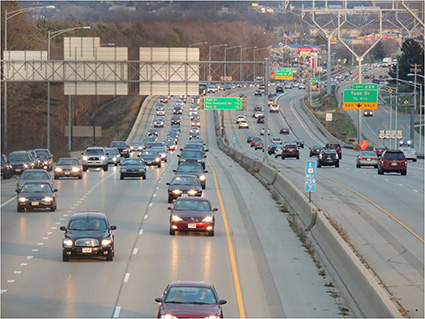 Overview
Overview
On February 17, 2017, the Federal Highway Administration (FHWA) enacted its
final rule requiring states to establish targets for six system performance measures intended to assess performance of the National Highway System, freight movement on the Intestate System and the Congestion Mitigation and Air Quality (CMAQ) Improvement Program.
This information enables people to estimate travel times so they can avoid delays such as arriving to work late and get where they need to go as effectively and efficiently as possible.
Goal
Assess and improve performance of the Interstate and non-Interstate National Highway System (NHS) for the purpose of carrying out the National Highway Performance Program (NHPP); to assess and improve freight movement on the Interstate System; and to assess and improve traffic congestion and on-road mobile source emissions for the purpose of carrying out the CMAQ Program.
Targets
On May 18, 2018, in coordination with Wisconsin Metropolitan Planning Organizations, WisDOT established two and four-year targets for the six system performance measures. WisDOT and the Southeastern Wisconsin Regional Planning Commission (SEWRPC) collectively agreed to unified targets for the Peak Hour Excessive Delay (PHED) measure and the Non-Single Occupancy Vehicles (Non-SOV) measure for the Milwaukee urbanized area. As the Minneapolis-St. Paul urbanized area extends into Wisconsin, WisDOT also collaborated with the Metropolitan Council, the Minneapolis-St. Paul MPO, and Minnesota Department of Transportation to establish joint PHED and Non-SOV measures for the Minneapolis-St. Paul urbanized area.
How are targets set?
Two travel time reliability measures are a measurement of travel time reliability for interstate and non-interstate highways on the National Highway System (NHS). Level of Travel Time Reliability (LOTTR) is the ratio of longer travel time to a normal travel time using data from FHWA’s National Performance Management Research Data Set (NPMRDS) or an equivalent data source.
There are three
Congestion Mitigation and Air Quality Improvement (CMAQ) measures. They are applicable to states and metropolitan areas that are part of a nonattainment or maintenance area for ozone, particulate matter or carbon monoxide. The intent is to find transportation projects that contribute to the attainment or maintenance of National Ambient Air Quality Standards (NAAQS) in those areas.
Reporting Frequency
Reliability measures established two and four-year targets for the Interstate, and a four-year target for non-Interstate NHS. The congestion measures’ performance period began on January 1, 2018, and ends December 31, 2021.
Two and four-year targets have been set.
Progress
View prior year’s results on FHWA’s Transportation Performance Management (TPM)
dashboard.
System Performance Measures:
- Interstate Highway Reliable Person-Miles Traveled
- Non-Interstate National Highway System (NHS) Reliable Person-Miles Traveled
- Freight Reliability Measure: Truck Travel Time Reliability (TTR) Index
- Congestion, Mitigation and Air Quality (CMAQ) Traffic Congestion: Annual Hours of Peak Hour Excessive Delay Per Capita
- CMAQ Traffic Congestion: Percent of Non-Single Occupancy Vehicle (SOV) travel
- CMAQ On-Road Mobile Source Emissions: Total Emission Reductions
In Wisconsin
While the FHWA reliability measures may be useful for describing the reliability of individual urban areas or individual states, these measures may not be practical to use for inter-state comparisons. The reliability metric calculations are based on “normal” travel times; as a result, states with a greater prevalence of recurring congestion and “normal” travel times that are significantly higher than posted speed or free-flow travel times should not be compared to states with “normal” travel times that are close to the posted or free-flow speed. Urban areas that have more hours of slow speeds, or congestion, have longer travel times than would be experienced at the posted speed limit. Conversely, urban areas with less congestion may have normal speeds that are closer to the posted speed limit. For this reason, two urban areas could have a similar reliability index while having very different levels of traffic congestion. The reliability index reflects how much travel times vary during a time period. A higher index means that the expected travel times are less predictable for drivers. The reliability index is not an indicator of congestion, but rather an indicator of how consistent trip times are on a route.
In 2017, FHWA changed contractors that provided the National Performance Management Research Data Set (NPMRDS) and advised all states to not use the new data set in any comparison with the previous data set. This resulted in only having one year of data (2017) for the establishment of these targets.
Thus, WisDOT felt it was prudent to be more conservative in establishing reliability targets. For more information regarding CMAQ, visit the Southeastern Wisconsin Regional Planning Commission’s site and read more about our MPO’s
congestion management process in Southeastern Wisconsin.